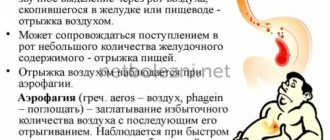Unlike the flu, ARVI or the common cold develops smoothly - a person gets worse gradually, over 1-2 days.
With the flu, the temperature most often jumps sharply (usually within 2-3 hours and lasts 3-4 days) to 39 degrees and above (although there are cases when the temperature does not rise at all).
Fever is 38-40C, lasting from 1 to 5 days, with a peak during the first 24 hours, and with ARVI, the body temperature rarely rises above 38 degrees.
An important feature of the difference between influenza and ARVI is the degree of general intoxication of the body.
- With ARVI, the sick person feels more or less normal.
- With the flu, symptoms of severe intoxication appear:
- chills, headache, dizziness, feeling of exhaustion, muscle pain, pain in the abdomen and eyeballs, vomiting, sleep disturbance, hallucinations.
For ARVI, symptoms from the respiratory tract come to the fore; signs of intoxication are not leading in the clinical picture. The patient is worried about: sore throat, redness and pain in the throat, cough (usually dry, intermittent, “barking” and can turn into a wet cough with sputum), runny nose (a common symptom). With ARVI, redness of the eyes appears only if a bacterial infection is associated with the disease.
The characteristic appearance of a patient with influenza is hyperemia and puffiness of the face, the vessels of the sclera are injected, hyperemia of the conjunctiva, cyanotic mucous membranes and lips. When examining the pharynx, granularity of the mucous membrane of the soft palate and uvula is revealed. Symptoms of damage to the upper respiratory tract in the first hours are usually not pronounced and are characterized by difficulty in nasal breathing, scanty mucous-serous rhinitis, dry mucous membranes, sore throat, rawness or pain behind the sternum, and an infrequent dry cough.
From the 2-3rd day of influenza, the development of tracheobronchitis is characteristic, the main symptom of which is a dry, obsessive, often painful, raw cough, accompanied by pain behind the sternum along the trachea. Acute bronchitis with damage to large and medium-sized bronchi is observed in 20% of cases.
Causes of high fever, nausea, headache
This set of symptoms can appear even in a person without any diseases. Nausea, headache, temperature up to 37 degrees occur during severe fatigue, stress, nervous or physical tension. In addition, these signs are characteristic of heat stroke. They pass in a few days, provided proper rest. However, these symptoms may also indicate more dangerous disorders that require treatment, medications and regular examinations by a doctor.
Diseases of the gastrointestinal tract
Fever, nausea, and headache are typical signs of inflammatory diseases of the stomach and intestines. They are also accompanied by abdominal pain, indigestion, and intolerance to certain foods. There are several main diseases that are often diagnosed in patients of any gender and age.
- Gastritis is inflammation of the gastric mucosa. The disease can occur in acute or chronic form. Its main cause is considered to be the opportunistic bacterium Helicobacter pilori; other pathogens can also be detected. Inflammation develops as a result of poor nutrition, impaired secretion of gastric juice, as well as long-term systematic intake of alcohol and certain medications. When the cause is eliminated, gastritis goes away without consequences.
- Gastric ulcer is a consequence of frequent exacerbation of gastritis, improper and irregular nutrition, taking certain groups of drugs (non-steroidal anti-inflammatory drugs), as well as increased secretion of gastric juice. Defects appear on the mucous membrane and increase in size. Without timely treatment and adherence to a diet, the ulcer may perforate with the formation of a defect in the stomach wall and the release of its contents to the outside.
- Crohn's disease is a chronic disease whose cause remains unknown. It affects the mucous membrane of certain areas of the large, less often small, intestine. During the diagnosis, inflammation of the mucous membrane, the appearance of ulcers and neoplasms, and narrowing of the intestinal lumen are detected. Treatment is symptomatic and surgery may be required to remove the affected area.
Diseases of the stomach and intestines require timely treatment. They quickly become chronic and progress. The doctor will determine the cause and stage of the disease and prescribe a treatment regimen. In most cases, a gentle diet is prescribed, in which it is recommended to eat food in small portions. Fatty, sweet, flour and fried foods, as well as offal, should be completely excluded from the diet.
Infectious diseases
A simple seasonal cold, ARVI, is a common occurrence. They are associated with a decrease in the body's immune defense during the off-season, bad weather conditions and a deficiency of vitamins in the diet. When you have a cold, you have a headache, nausea, the temperature rises to 37 degrees or more, and general weakness appears. However, these symptoms last no more than a week. Rest, bed rest, and drinking plenty of fluids helps you quickly return to normal.
Infections that affect the digestive tract pose a great danger to humans. These diseases occur with signs of nausea, vomiting, and general weakness. There are several diseases that can be contracted by consuming poorly washed vegetables and fruits, low-quality products, and contaminated water.
- Rotavirus infection – also called stomach or intestinal flu. The disease occurs with general weakness, fever, nausea, and can manifest itself in an acute form. In most cases, treatment takes place at home, but hospitalization may be required.
- Salmonellosis is a disease caused by the Salmonella bacterium. Infection often occurs when eating meat and eggs that have not been heat-treated. The infection causes severe pain in the head and stomach, nausea and vomiting. After confirmation of the diagnosis, the patient is placed in an infectious diseases hospital and treated with antibiotics.
- Botulism is a dangerous disease caused by a bacterium. In the human body, it releases toxins that cause severe pain, nausea and vomiting, weakness and fever.
- Clostridiosis and staphylococcosis are no less dangerous toxic infections that occur with similar symptoms. They affect the mucous membrane of the digestive tract, and toxins cause general weakness and poor health. Treatment takes place in a hospital.
Infectious diseases are characterized by an acute onset. Nausea, vomiting, and headache occur abruptly, but in some patients the clinical picture increases gradually. It is important to consult a doctor and begin treatment at the first symptoms in order to reduce the risks to the body and the likelihood of complications.
Parasite infestations
Helminths are parasitic worms that enter the body with water or food and can be found on environmental objects. After entering the body, they go through a development cycle and multiply. Their waste products are toxic to humans, so helminthiases are accompanied by nausea, vomiting, and general weakness. In addition, a large accumulation of parasites in the intestinal lumen is dangerous due to rupture of its wall.
To confirm the diagnosis it is necessary to undergo tests. Blood, feces or other liquids are used as research material. It is important to pay attention to the first symptoms indicating the appearance of helminths, including:
- sudden weight loss without changing your diet;
- frequent attacks of nausea;
- pain in the head and stomach;
- slight increase in temperature;
- pallor of the skin and mucous membranes, possibly a yellowish tint.
It is important that helminths can live not only in the human gastrointestinal tract. Some representatives affect the liver, lungs, heart, and can migrate with blood and lymph. The smallest ones affect blood cells and cause their destruction. Treatment is prescribed individually, depending on the type of parasite and the degree of invasion. The scheme includes several stages, during which the patient needs to take specific drugs, and then - means to restore normal microflora.
Brain diseases
Fever, nausea, weakness, headache - these signs can be a signal of various brain diseases. They are based on inflammation or mechanical compression of tissues, as a result of which the innervation of certain parts of the body is disrupted. These are dangerous disorders that require treatment in the early stages - this is the only way to prevent dangerous consequences.
- Meningitis is an inflammation of the lining of the brain. The disease has a viral or bacterial origin, less often it is caused by fungi. Fever and headache are the first symptoms for which it is important to immediately consult a doctor. Treatment takes place in a hospital, with the use of antibiotics and drugs to improve blood circulation in the brain.
- Encephalitis is inflammation of the brain. The process develops when exposed to infectious agents and can manifest itself in polio, rabies, smallpox and other diseases. Encephalitis can also be caused by bites from infected ticks. The disease is particularly dangerous and can be fatal. At home, you can prevent it by treating blood-sucking insects and timely vaccination.
- Stroke is an acute disorder of cerebral circulation. It can be caused by insufficient blood supply to brain cells (ischemia) or rupture of a vessel with the formation of a hematoma. The first symptoms may be slight weakness, headaches, nausea, but the condition is life-threatening. The chances of full recovery are especially high if you see a doctor in the first 2 hours after the attack.
- Traumatic brain injuries are the reason why fever, nausea and headache bother a person even after a long time.
Symptoms of inflammatory diseases of the brain appear sharply and immediately cause an acute clinical picture. Headache and nausea do not go away even after taking medications, and only get worse over time. Doctors at the Clinical Institute of the Brain warn: the effectiveness of treatment depends on the timeliness of first aid. Otherwise, there may be irreversible disruption of many brain functions and death of nerve tissue.
Poisoning
Intoxication of the body with food, alcohol and medications, as well as various gaseous substances is a dangerous condition. Toxins penetrate the bloodstream and quickly spread throughout organs and tissues. The patient’s well-being deteriorates immediately, within several hours after exposure to toxic compounds. The clinical picture of poisoning includes the following symptoms:
- nausea and vomiting;
- acute headache, dizziness, fainting;
- indigestion, diarrhea;
- pallor of the mucous membranes;
- possible increase in temperature;
- arrhythmias, increased heart rate.
In case of poisoning with certain substances, you can use antidotes. These are compounds that neutralize the effects of toxins and promote rapid improvement in well-being. However, for most types of poisoning there are no antidotes. Treatment consists of drinking plenty of fluids, fasting, and drips of electrolyte solutions. These measures will restore normal blood balance and reduce the concentration of toxic substances.
Other reasons
Deterioration in well-being can be caused by various factors. Nausea, fever, headache indicate various inflammatory processes, disruptions in the functioning of various organs and systems. It is important to pay enough attention to diagnosis to determine the exact cause of deterioration in health. Additional tests may show the following disorders:
- increased blood pressure - in the chronic form, attacks can be triggered by stress, fatigue, and changes in weather conditions;
- diseases of the inner ear - labyrinthitis, Meniere's disease and other pathologies are manifested by acute headache, hearing impairment, and possible discharge from the ear canal;
- disorders of the thyroid gland - they can be determined by the results of blood tests;
- migraine - the disease manifests itself as attacks of headache, which are associated with cerebrovascular insufficiency.
Headache, nausea, deterioration in health, fever are common symptoms that can occur in the absence of any diseases. They often occur in the warm season, as a result of heat stroke. After prolonged exposure to the open sun, a person’s temperature rises and weakness appears. It is important to monitor your well-being in the summer and protect your head and skin from direct sunlight.
Causes of weakness
Weakness can be caused by a number of reasons, including:
- avitaminosis. Weakness is often caused by a lack of vitamin B12, which is essential for making red blood cells (RBCs) and preventing anemia, and is also important for cell growth. Vitamin B12 deficiency leads to the development of anemia, which is considered the most common cause of general weakness. Another vitamin whose deficiency leads to weakness is vitamin D. This vitamin is produced by the body when exposed to sunlight. Therefore, in autumn and winter, when daylight hours are short and the sun does not appear often, a lack of vitamin D may be the cause of weakness;
- depression;
- thyroid diseases. Weakness can occur with both increased thyroid function (hyperthyroidism) and decreased function (hypothyroidism). With hypothyroidism, as a rule, there is weakness in the arms and legs, which is described by patients as “everything falls out of hand”, “legs give way”. With hyperthyroidism, general weakness is observed against the background of other characteristic symptoms (nervous excitability, hand tremors, elevated temperature, rapid heartbeat, weight loss while maintaining appetite);
- vegetative-vascular dystonia;
- chronic fatigue syndrome, indicating extreme depletion of vitality;
- Celiac enteropathy (celiac disease) is the inability of the intestines to digest gluten. If at the same time a person consumes products made from flour - bread, pastries, pasta, pizza, etc. – manifestations of indigestion develop (flatulence, diarrhea), accompanied by constant fatigue;
- diabetes;
- diseases of the cardiovascular system;
- oncological diseases. In this case, weakness is usually accompanied by low-grade fever;
- lack of fluid in the body. Weakness often comes in the summer during hot weather, when the body loses a lot of water, and it is not possible to restore the water balance in time;
- some medications (antihistamines, antidepressants, beta blockers).
An attack of weakness can also occur in the following cases:
- trauma (with large blood loss);
- brain injury (in combination with neurological symptoms);
- menses;
- intoxication (including infectious diseases such as influenza).
Diagnostic methods
Nausea, headache, temperature of 37 degrees or more are good reasons to undergo a full examination. It is important to identify infectious diseases at the initial stage, isolate the patient in a hospital, or explain the rules on how to prevent further spread of the infection. After the examination, the doctor may prescribe additional tests and examinations:
- ultrasound examination of the gastrointestinal tract, liver and biliary tract;
- examination of the brain using MRI or CT to identify areas of ischemia, neoplasms, aneurysms and other pathologies;
- clinical, biochemical blood tests - will indicate inflammatory processes in the body, disturbances in the functioning of internal organs;
- X-ray of the cervical spine - the cause of headaches may be associated with vascular spasms in this area.
At the Clinical Institute of the Brain, it is possible to conduct a full diagnosis of headaches, which are accompanied by fever and nausea. Our center has modern equipment - thanks to it, you can get the most accurate results.
Which doctor should I contact about weakness?
If weakness is the main complaint, then it is best to consult a general practitioner (general practitioner or family doctor).
If you have stomach problems due to weakness, you can consult a gastroenterologist.
If weakness is accompanied by pain or discomfort in the heart area, you should consult a cardiologist.
Be prepared for the fact that you may be referred for consultation to doctors of such specialties as a hematologist, oncologist, neurologist, endocrinologist, or psychotherapist.
Treatment methods
The treatment regimen is selected individually, depending on the exact diagnosis, the patient’s age, additional pathologies and other factors. Doctors at the Clinical Institute of the Brain will select the optimal methods for treatment in a hospital or at home. The patient may be prescribed:
- antibiotic therapy - treatment with antibiotics brings results for bacterial infections, as well as as a preventive measure for purulent complications;
- a gentle diet is a prerequisite for disorders of the digestive tract, gastritis and peptic ulcers, as well as for poisoning;
- drip administration of electrolyte solutions - prescribed for dehydration, acute intoxication and other pathologies;
- sorbents - drugs that bind toxins in food poisoning and remove them naturally;
- other medications - in different cases, medications may be prescribed to improve brain nutrition, to strengthen blood vessels, anti-nausea medications and painkillers;
- surgical intervention is necessary only in cases where drug treatment does not bring results, including to remove tumors.
At the Clinical Brain Institute, you can undergo a complete diagnosis for headaches, fever, weakness and nausea. Doctors strongly recommend not to self-medicate and to seek medical help when the first symptoms appear.
There are different types of flu
With a mild form of influenza, the body temperature does not exceed 38C and returns to normal after 2-3 days. Symptoms of general intoxication and catarrhal syndrome are mild, which is practically no different from acute respiratory infections of other etiologies.
The moderate form of influenza is characterized by an increase in body temperature to 39C, severe intoxication and damage to the respiratory system. The fever lasts up to 4-5 days. This form of influenza is the most frequently reported.
Severe forms of the disease are observed mainly during influenza epidemic periods, caused by a new or modified version of the influenza A virus.










